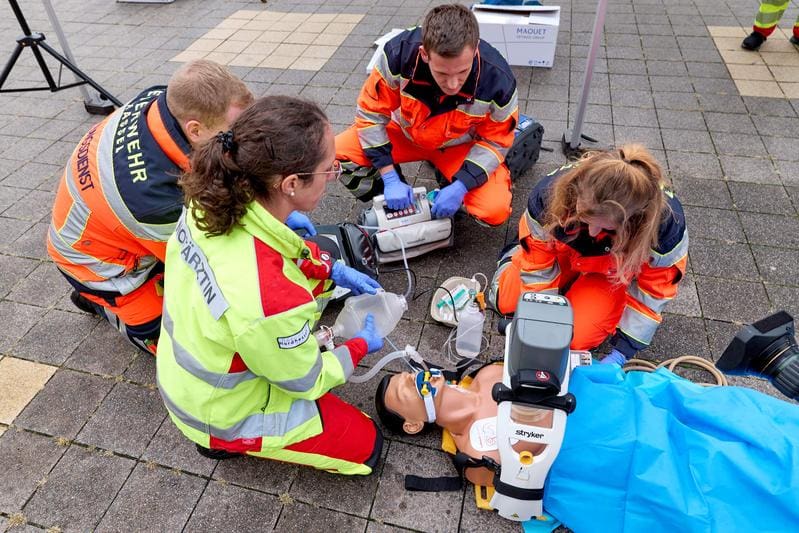Cardiovascular arrest in Germany: Significant progress, but further action needed
In 2024, an estimated 136,000 people in Germany suffered a sudden cardiac arrest outside of a hospital, about 370 cases daily. In around 67,000 cases, the rescue service initiated resuscitation measures. This is the result of the current annual report of the German Resuscitation Register , which is supported by the German Society of Anaesthesiology and Intensive Care Medicine.
The analysis is based on data from 198 emergency medical and rescue services, covering a care region with about 42 million people. A reference group of 44 particularly carefully documented sites enabled precise projections and reliable conclusions to be drawn about resuscitation care in Germany.
Positive developments can be seen in the participation of first aiders: In the reference group, the proportion of resuscitations initiated by laypeople rose from 50.7 percent in 2023 to 55.4 percent in 2024. In the overall data set, the rate grew from 49.9 to 52.0 percent. For the first time, the registry also documented a significant increase in defibrillations by first aiders: In two percent of the cases ŌĆō a total of 529 patients ŌĆō a defibrillator was used before the emergency services arrived. Experts see this as a success of on-site helper systems, but emphasise that Germany has some catching up to do in an international comparison.

Telephone resuscitation instructions by control centers are also gaining in importance. In the reference group, their share rose from 33.0 to 40.4 percent, and in the overall data set from 33.9 to 37.3 percent. Nevertheless, nationwide implementation remains expandable. The rapid arrival of the emergency services is also crucial: In the reference locations, the rescue service arrived within eight minutes in 78.5 percent of the cases, a slight increase compared to the previous year. In the overall collective, however, the rate was only 73.2 percent, which means that the target of 80 percent was again missed.
The data show further details: Two-thirds of those affected were male, one-third female. The average age was 69.9 years, with 45 percent under 70 years old and almost a third over 80 years old. In 55 percent of cases, a cardiac event such as a heart attack was the cause, in 15 percent a respiratory problem. Most resuscitation (70 percent) took place in the home environment, 15 percent in public spaces and 12 percent in care facilities.
The survival rate remained stable at about 11 percent, with a third of those affected reaching the hospital with spontaneous circulation. Over 70 percent of the survivors showed good neurological recovery. In hospitals, the use of temperature management, a method of targeted cooling of the body, fell to 17.3 percent, although studies show its benefits for the chances of survival. International experts recommend a temperature check of at least 24 hours to ensure the quality of life of patients.
Despite progress in lay resuscitation, survival rates are stagnating. Experts are calling for a further development of the entire supply chain, from primary care to the rescue service to the clinic. In particular, the timely application of measures and the quality of resuscitation must be improved nationwide in order to further increase the chances of survival.
Editor: X-Press Journalistenb├╝ro GbR
Gender Notice. The personal designations used in this text always refer equally to female, male and diverse persons. Double/triple naming and gendered designations are used for better readability. ected.




